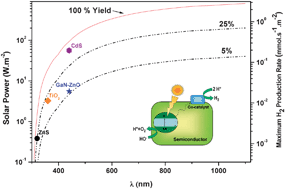Since the early development of this technology in the 1970s, TiO2 constitutes the archetypical photocatalyst due to its relatively high efficiency, low cost and availability. However, during the last decade a considerable number of new photocatalytic materials, either semiconductor or not, have been proposed as potential substitutes of TiO2, particularly in the case of solar applications, for which this standard photocatalyst is not very suitable because of its wide band gap. Semiconductors based on cations with d0 configuration such Ta5+ or Nb5+, as well as oxides or nitrides of d10 elements such as Bi3+, In3+ or Ga3+ are among the most successful novel photocatalysts, but non-semiconductor solids like cation-interchanged zeolites also produce interesting results. In addition, some classical semiconductors like ZnO or CdS, initially discarded as a consequence of their poor stability under irradiation, have been reconsidered as feasible photocatalysts for particular applications. This growing body of data requires new analysis of the challenges and opportunities facing photocatalysis in order to assess which of the photoactive materials are best for each particular application. In this review, we summarize, with an historical perspective, the main achievements obtained with photocatalyst alternatives to TiO2 in the three main niches for this technology: water splitting for hydrogen production, decontamination and disinfection processes, and organic synthesis.


 Please wait while we load your content...
Please wait while we load your content...